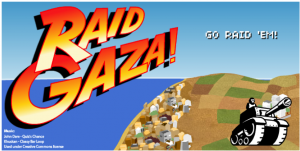A post by external speaker Antonio Planells:
Last week I gave my research seminar presentation about video games and fictional worlds and It was the first time I did it in English. In this occasion I summarized my doctoral thesis in a powerpoint document titled “Video games as ludofictional worlds: The emergence of playable fiction in the Ludology-Narratology debate”.
The ludofictional world concept (“ludus” as a playable fictional world) emerges as a middle ground model between Ludology (the conception of games as systems of rules that cannot be undersood as narrative artifacts) and Narratology (games as narrative systems that can tell stories).
This new approach provides three different methodological tools or perspectives:
1.- The Macrostructural Static Dimension: Games as sets of possible worlds, considering each game level as a particular fictional world. This approach can be useful for game design research projects.
2.- The Microstructural Dynamic Dimension: The evolution of ludofictional worlds through possible and/or necessary actions. In this perspective, the characters subworlds (what they fear, desire, imagine,…) is key to understand the game experience.
3.- The Metaleptical Dimension: Considering the ambiguity of the concept “interactivity”, I propose the use of “metalepsis”, the narratological tool that refers to the activity of the user outside the fictional world.
After considering some reseach issues (i.e. the role of character analysis in the gender perspective), I showed how the ludofictional worlds theory can be used to understand games as cultural objects with some particular ideological patterns. Thus, I analyzed the political game “Raid Gaza!”, a good example of the inseparable connection between game rules and fictional context.

Below is a presentation slides pdf document expands these ideas.
Understanding video games as worlds
